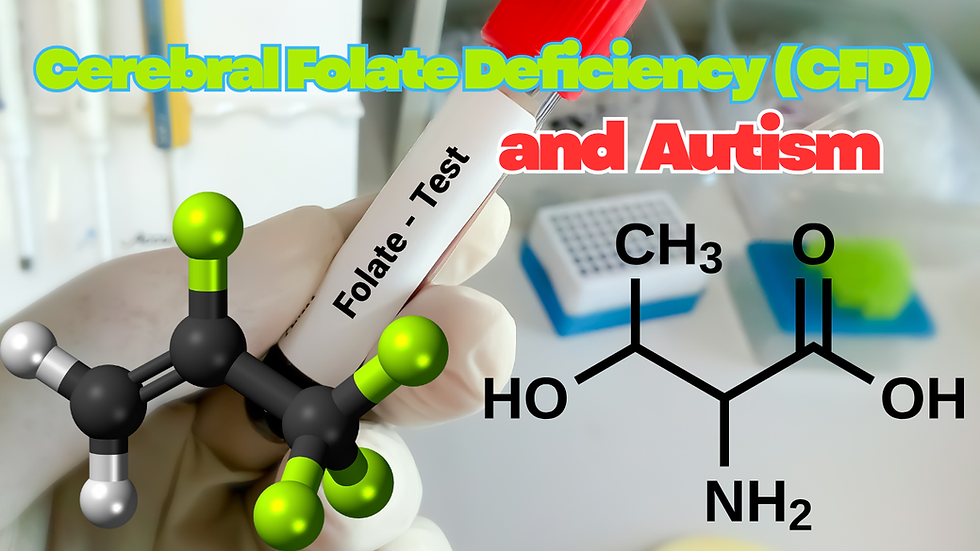Autism or ADHD? How to Tell the Difference in Your Child’s Development
- Dr. Kevin Davis
- May 16, 2025
- 3 min read
When your child shows attention problems, emotional outbursts, or social challenges, you might wonder:
Is it Autism, ADHD, or both?

Many parents are unsure how to differentiate between autism spectrum disorder (ASD) and attention deficit hyperactivity disorder (ADHD)—two common neurodevelopmental disorders that often overlap. These conditions share some similar behavioural signs, making diagnosis and treatment challenging without a thorough developmental evaluation.
Let’s break down the similarities, differences, and why accurate identification is key for supporting your child’s learning differences and mental health.
What Do Autism and ADHD Have in Common?
Both Autism and ADHD are neurodiverse conditions that can affect child development, especially in areas such as executive function, communication, and social skills. Children with either (or both) may experience:
Inattention and distractibility in school or during tasks
Emotional dysregulation, including tantrums, meltdowns, or sudden emotional outbursts
Sensory sensitivity or sensory overload (bright lights, loud sounds, or certain textures)
Difficulty forming and maintaining peer relationships
Struggles with impulsivity, fidgeting, and movement needs
These overlapping behaviours can lead to misdiagnosis or a dual diagnosis, which means a child meets the criteria for both conditions.
Key Differences Between Autism and ADHD
Understanding the differences between Autism Spectrum Disorder and ADHD is essential for identifying your child’s needs. Here's a side-by-side comparison of the most common features:
Feature | ADHD (Attention Deficit Hyperactivity Disorder) | Autism Spectrum Disorder (ASD) |
Social Interaction | Seeks connection but may interrupt, miss social cues | May avoid eye contact, struggle with non-verbal communication |
Communication | Talks excessively, verbal delays uncommon | May have communication delays, echolalia, or be non-verbal |
Focus & Attention | Easily distracted, task avoidance, needs stimulation | May exhibit hyperfocus on special interests |
Behaviour | Impulsive behaviour, often changes interests quickly | Shows repetitive behaviours or stimming (e.g., hand flapping) |
Flexibility & Routine | Can adapt with support | Strong routine dependency and resistance to change |
Play & Imagination | Engages in pretend play, though may struggle with rules | May have difficulty with pretend play or joint attention |
Can a Child Have Both Autism and ADHD?
Yes — and it's more common than you might think. Research shows that 30–50% of children diagnosed with Autism also meet the criteria for ADHD. This co-occurring disorder is known as a dual diagnosis and requires a comprehensive developmental screening and behavioural assessment for clarity.
When left undiagnosed, children may continue to struggle with school challenges, peer conflict, sleep disturbances, and academic performance issues.
Why an Accurate Diagnosis Matters
Each condition requires individualized support:
ADHD treatment may include behavioural therapy, cognitive behavioural therapy (CBT), classroom accommodations like a 504 plan, and sometimes stimulant medication.
Autism therapy often involves speech therapy, occupational therapy, ABA therapy, and social skills training tailored to sensory processing and communication challenges.
At our clinic, we use gold-standard screening tools like the ADOS-2 and DSM-5 criteria to provide accurate, strengths-based assessments. Our approach considers early signs, emotional intelligence, and developmental milestones to guide you toward the right therapy options.
Early Intervention and Support
Whether it’s language development, executive dysfunction, or routine rigidity, getting help early can improve outcomes dramatically. We help families build structured routines, provide access to inclusive education, and offer resources for parenting autism and parenting ADHD with empathy and evidence-based tools.
Our services support:
IEPs and individualized education plans
Teacher training and classroom inclusion
Behaviour plans and positive reinforcement strategies
Caregiver support, parent training, and advocacy
Next Steps: Get the Clarity Your Child Deserves
If you're noticing warning signs like social anxiety, verbal stimming, difficulty listening, task initiation issues, or trouble with transitions, don’t wait.
We’re here to guide you with compassionate, expert-led evaluations that help uncover the root of your child’s behavioural issues, whether it’s Autism, ADHD, or both.
👉 Schedule a Professional Evaluation Today
Discover your child’s strengths. Support their unique journey. Build a plan that works.




Comments